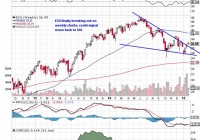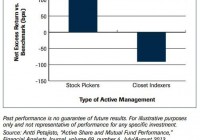
Europe looks to take over as the market leader following the ECB QE Announcement. How can you find a great manager to give you the smart Europe exposure you want? Check out five great options. A lot of uncertainty about European equities has been resolved since the ECB announcement on the 22nd where a long-anticipated QE program was finally unveiled. Even with the leftist victory in Greece, there’s been a clear shift in momentum with the iShares MSCI EMU ETF ( EZU) finally breaking out on a weekly basis. The rally is still in its early stages, so don’t be surprised if we retest the upper boundary of the downtrend line in the near future. (click to enlarge) Looking at relative momentum versus the S&P 500 (using the SPDR S&P 500 Trust ETF (NYSEARCA: SPY )), there’s been a clear shift towards outperformance by EZU. Again, the move is in its early stages but could represent an optimal time to get consider going long. After all, if EZU loses steam here, what’s your downside target? For those technicians out there, we strong prior support around $35 while those looking for a catalyst have it in the ECB’s loosening of monetary policy versus the possibility of FED tightening. (click to enlarge) So if you think it’s time to get off the sidelines and get into the game, but don’t want to commit to an EU or Europe specific fund, this posting is for you. For me, I want true EU exposure without a lot of British or other non-EU equity exposure and added EZU to my portfolio last Thursday, but what about those investors out there whose portfolios are U.S. heavy and just need foreign equity period? Well you’re in luck because the Yinzer Analyst, instead of spending time living up to his new year’s resolutions, sought out five great funds that can add value to your portfolio. For those readers who are new to the process; I first began by deciding what exposure I wanted, narrowing it down to the benchmark and Morningstar sector and then zeroing in on funds that I feel have the potential to outperform an index fund over a three to five year time frame. Without access to a data service like Morningstar Direct, it took a lot of time to piece together different sources but having used a few international funds in my day (although I currently have no positions in any of these funds), I do have some short cuts to the process. First, I want exposure to large-cap developed stocks, not a 75%/25% developed/emerging market blend. This is key; after seven months of underperformance and with the ECB announcement coming up; my goal isn’t to gain Russian exposure or Brazilian exposure. My goal is to add European exposure plain and simple. Now there are a wide variety of funds that are Europe specific and we’ll talk about those later this week, but this exercise is for those investors with a U.S. centric portfolio who after five or six years need to rebalance and want to add international exposure. So this rules out benchmarks that include emerging market equities like the MSCI ACWI ex. USA or MSCI World; instead we’re going old-school with MSCI EAFE which has a 99% allocation to developed markets with Greater Europe making up 66% of that. So heading over to Morningstar, I used their Premium Screener function to search for funds with a European heavy portfolio (greater than 60%) along with an initial investment at or below $2500 and still available to new investors (so long Oakmark.) If you don’t want to pay Morningstar prices, check out the new FundVizualizer tool from Putnam Funds. Yes, the focus is obviously on getting you to use Putnam funds but it has a lot of capability for a “free” service. Anyway, once you get rid of multiple share classes, you have a short list of about 75 funds split between the Foreign Large Blend and European Equity categories but our focus on a strong correlation to MSCI EAFE keeps the list below short and direct. Remember, these are the Yinzer Analyst’s recommendations but you still need to do your own research and check out the funds for yourself before you choose to invest in any fund. Read our disclosures for more details. (click to enlarge) Let’s start with our top three funds by addressing the elephant in the room; it’s a pretty Pittsburgh heavy list but that was entirely a coincidence. The Federated International Leaders Fund ( FGFAX) is one of the strongest performers in the Foreign Large Blend space over the last sixteen years since March Halperin took over as fund manager, placing consistently in the top five percent of funds in its category every year over the 3,5,10 and 15 year trailing periods. The fund has always held larger allocations to European equities, so much so that while MSCI EAFE is the official benchmark, Morningstar recognizes MSCI Europe as being the “best fit” benchmark to evaluate the performance against. The story has changed somewhat in 2015 as the fund is down 2.38% through 1.16 compared to -.8% for MSCI EAFE and -.33% for the category. The main culprit seems to Swiss stocks including a 4% allocation to Credit Suisse that’s taken a nose dive since the start of 2015. One other feature to watch for in all active managers is a tendency to hold onto positions (campers) and FGFAX is no exception with an average turnover of 5% a year. Next up is the MFS International Value Fund (MUTF: MGIAX ), which like FGFAX has placed in the top decile for active fund managers in the Foreign Large Blend space over the last fifteen years although unlike FGFAX is outperforming the benchmark handily this year with a return of .76% YTD. The fund recently had a change in management with long-time manager Barnaby M. Wiener (right?) appearing to have left the fund at the end of 2014 although he was replaced by another manager, Benjamin Stone, who has been with the fund since 2008. Normally this would put the fund on a watchlist, but MFS’s international funds have a strong reputation plus the prior service record of Mr. Stone is worth the benefit of the doubt. Like FGFAX, MGIAX has a relatively low turnover ratio at 18% so again, expect somewhat cyclical performance but the fund has only underperformed the iShares MSCI EAFE ETF ( EFA) once in the last five years, delivering a five year annualized return of 9.36% compared to 4.45% for EFA. More impressive is that it did it with lower volatility than EFA and thus earned a suitably high information ratio although I’m sure my more cynical counterparts will point out that rarely do high ratios persist for long periods. Finally, another strong candidate from the hometown team is the relatively small (less than $600 million in AUM) the PNC International Equity Fund (PMIEX.) Normally, I wouldn’t look twice at a bank fund for the sole reason that banks usually haven’t the least incentive to actually spend money on active management. Historically the focus has been on providing a portfolio solution for in-house trust or wealth management accounts where the pressure to deliver performance has been somewhat less than you would expect to find with an independent advisor so active management fee’s for close indexer performance. Always a bad mix. What makes PMIEX different? Like crosstown rival FGFAX, this fund has a strong history of outperformance delivered under one manager who has been with the fund since 1998 although the turnover ratio is significantly higher with PMIEX at around 31% to FGFAX’s recent 5%. The fund also has more holdings, giving it a broader focus and lower tracking error relative to MSCI EAFE but helping it avoid some of the pain inflicted on Swiss equities although PMIEX is also underperforming the category so far in 2015 with a YTD return of -.75%. Investors can expect more “even” performance than FGFAX but if the focus is on really picking up Europe exposure, PMIEX has a significantly smaller positioning in the region relative to FGFAX but might offer a better solution for investors who need a “one and done” solution. With three great options like that, why am I also giving you two “also-rans” that at best have delivered market-like performance over the last several years? Because as great as the first three funds are, you never want to slavishly follow just one manager and both of these funds have had management changes in the last three years that can hopefully offer better performance going forward. How did I find them? I would have discarded them after my initial scrub but decided to do some digging for one reason; both funds are positive and in the upper quartile in 2015. Let’s start with Goldman Sachs where a new manager took over the tiny Goldman Sachs Focused International Equity Fund (MUTF: GSIFX ) in early 2012 and proceeded to take it from a consistent underperformer to beating EFA in both 2012 and 2013. So why is he still managing a $200 million dollar fund? Because he was absolutely crushed in 2014, down nearly 13% to EFA’s 6.2% loss as heavy losses on BG Group ( OTCQX:BRGYY ) and Banco Popular Espanol ( OTCPK:BPESY ) combined with a concentrated portfolio (hence ‘focused’) to kick him when he was down. Even with the shellacking, GSIFX’s performance was strong enough over the last three years to slightly outperform EFA. So why do I like the fund? Because the manager’s a true active manager (underperformance is a risk you take moving away from the herd) who’s not afraid to take large positions and best of all, has shown he can outperform. Best of all, he’s willing to trade with highest turnover ratio in this class at a 121%. Finally, mid-sized life insurance companies are historically as bad as mid-sized banks at running mutual funds, but I have high hopes for the Sentinel International Equity Fund (MUTF: SWRLX ). Not just because the Vermont based fund family once sent me five pints of Grade A medium amber maple syrup as a gift or because I still watch Super Troopers whenever it’s on Comedy Central. Like GSIFX, this fund added a new manager in late 2012 who delivered tremendous performance in 2013 with more middling performance in 2014. He’s managed to deliver solid performance with slightly less volatility, has a higher turnover ratio than the top 3 funds at 52%, has concentrated positions showing active management but most of all, what I like about this fund is what it doesn’t have…assets. There’s enough literature pointing out the historic outperformance of smaller funds with new managers to larger, more established funds constrained by liquidity concerns. No matter which fund you choose, if any, remember that you always have options and it can’t hurt to start your search with some of Pittsburgh’s finest.

